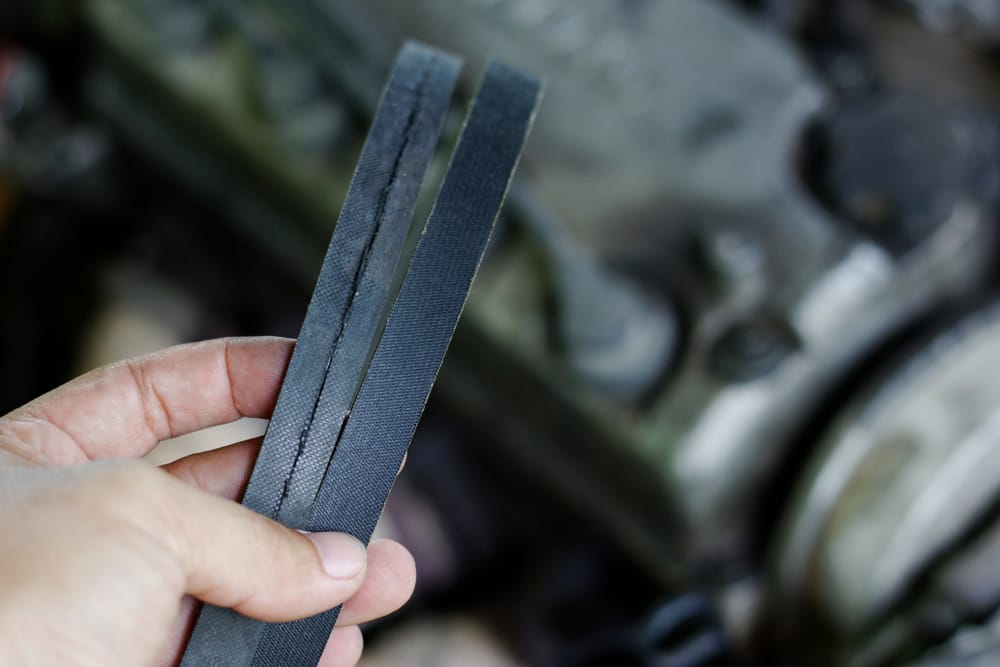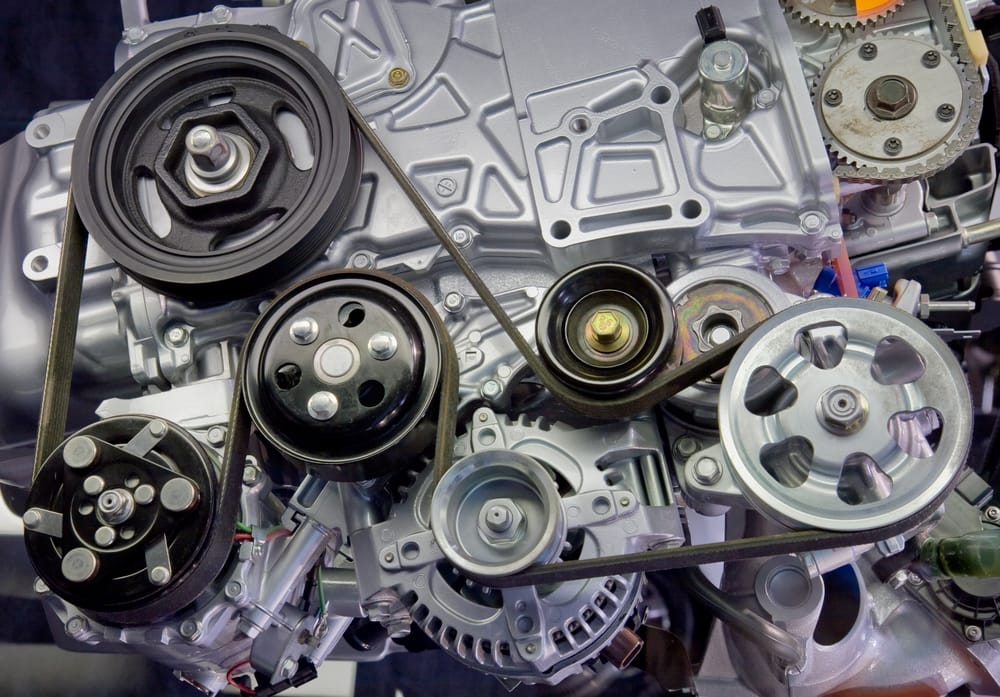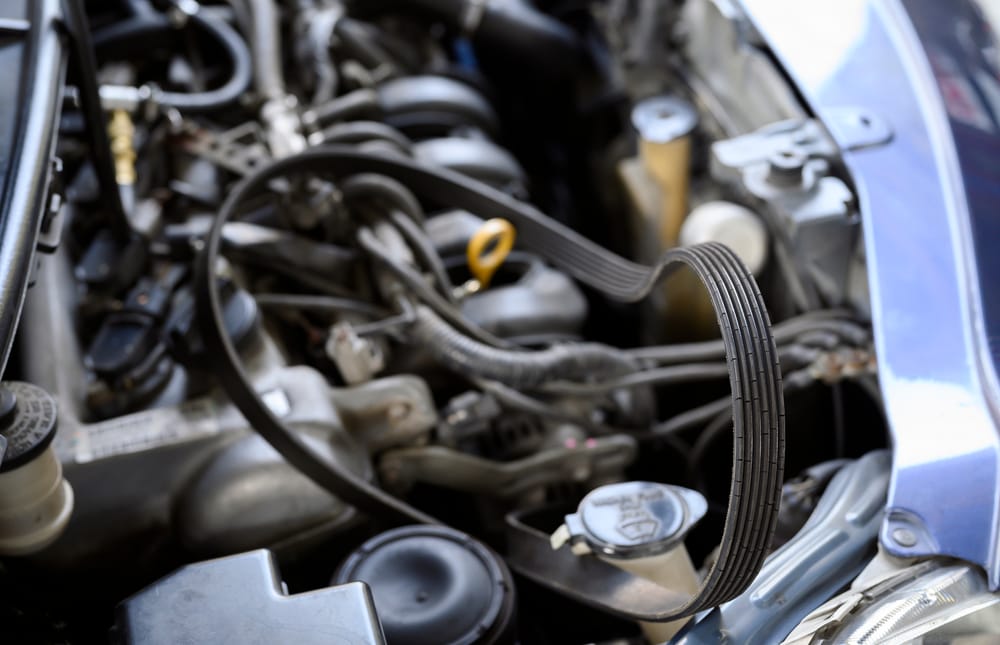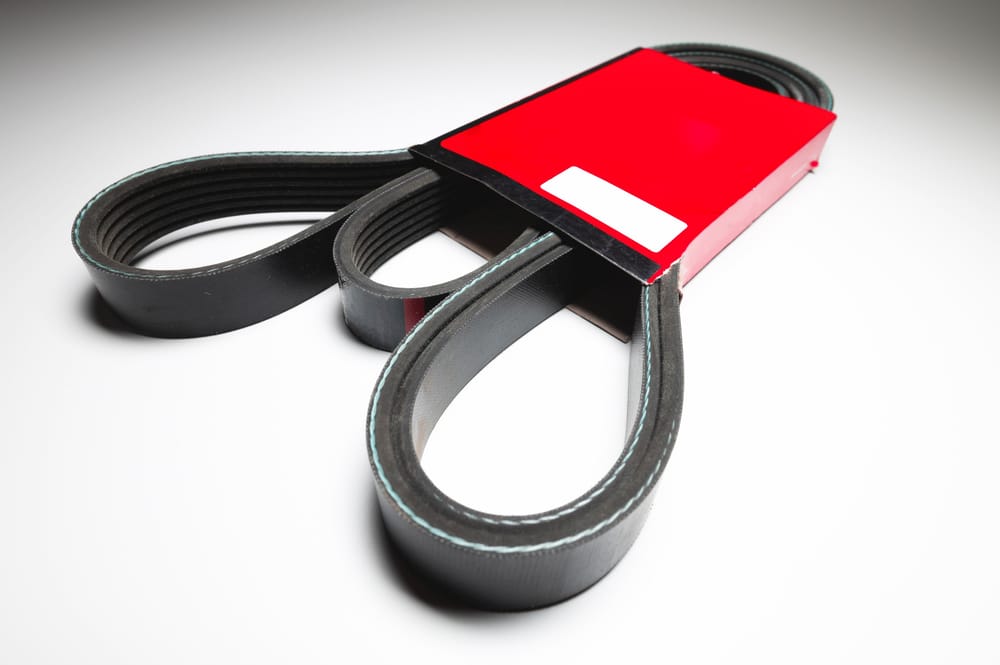A serpentine belt drives various engine accessories, such as the water
pump, alternator, AC compressor, and power steering system. The belt, made
from rubber, takes the rotational energy from the crankshaft and delivers
it to other engine systems.
You cannot drive a car without a serpentine belt because it operates
the alternator. As a result, the car will only work for a few minutes
before the battery dies, the electrical system fails, and the vehicle
stalls.
Along with the alternator, the power steering and AC systems won't
function without the serpentine belt.
Let's look at what happens if you drive without a serpentine belt.
 Damaged serpentine belt in the hand of a mechanic.
Damaged serpentine belt in the hand of a mechanic.
What Happens If You Drive Without A Serpentine Belt?
Driving a car without a serpentine belt will drain the car battery, stop
the power steering assistance, and shut off the AC compressor. In some
vehicles, it may also make the engine overheat.
When the battery dies, all the electrical components will stop working
too.
The serpentine belt powers many essential engine components, including the
coolant pump and the alternator. If you were to drive without it, here is
what might happen:
-
Without a serpentine belt, the alternator will not work, the battery
won't get any charge, and it may start draining quickly.
- the check engine light will be triggered.
-
The battery warning light will also come on because the battery isn't
being charged.
-
When the battery dies, the electric components, such as the radio and
headlights, will also stop working. If you switch off the engine at
this point, you won't be able to start it again.
-
Your steering wheel will also become heavier and difficult to maneuver
because the power steering pump will stop working without a serpentine
belt.
-
The serpentine belt also drives the air conditioning compressor, so the
car AC will stop working without it.
-
In some vehicles, the serpentine belt also drives the water pump.
Without it, the coolant may not circulate, and your engine will start
overheating, bringing about engine damage.
 The serpentine belt powers various components and systems.
The serpentine belt powers various components and systems.
How Long Can My Car Run Without A Serpentine Belt?
Without a serpentine belt, your car can't run for long. Among various
other components, the serpentine belt drives the alternator, which is
responsible for keeping your battery charged. With the alternator not
working, the battery will discharge quickly, and your car will stop
running after only a few minutes.
If you plan to drive your car long without a serpentine belt — don't. There
are too many risk factors involved with the task.
How long you can drive depends upon the charging status of the car battery.
If the battery has a charge, the engine will start fine without a
serpentine belt, but the warning light will pop up because the alternator
is not operating.
With a fully charged battery, you can drive longer. But if you continue
using headlights, fans, and other power-consuming systems, your driving
window will narrow — just a few minutes.
You should also note that the entire time you drive without a serpentine
belt, your steering will be stiff because the power steering pump will also
not work.
In a vehicle where the serpentine belt also drives the water pump, the
engine will start overheating because of insufficient coolant flow. How
quickly it happens depends upon the surrounding temperature. For example,
it may happen faster during the summer and slowly when it is cold.
 A worn serpentine belt that is on the brink of breaking.
A worn serpentine belt that is on the brink of breaking.
Why Does A Serpentine Belt Break?
A serpentine belt breaks either because it has exceeded its lifespan or
because of misaligned pulleys, faulty peripherals or components, or an
engine oil leak.
Serpentine belts can break either because of natural causes or external
factors. They are as follows:
1. Worn Out Belt
Serpentine belts are designed as lifetime parts. Meaning an original
equipment model should exceed the warranty period before failing.
Serpentine belts start rotating the minute you switch the car on and keep
working until you turn it off.
A serpentine belt lasts between 60,000 to 100,000 miles. If you have driven
over 60,000 miles, chances are that your serpentine belt is showing signs
of wear. You can expect it to break at any time.
2. Faulty Component
If any of the components driven by the serpentine belt break down, it will
exert extra stress on the serpentine belt, bringing about its failure.
For example, the serpentine belt winds over a hydraulic belt tensioner
supported by a shock absorber for smooth operation.
If either of these components becomes defective, it will put more load on
the belt, causing it to wear out and ultimately break.
3. Oil Leak
Your car engine can sprout a motor oil leak due to degraded seals, loose
connections, or bad engine gaskets.
If this oil gets on the serpentine belt, it will start slipping and wear
out more quickly.
An oily serpentine belt may also get the oil into pulleys, damaging their
bearings.
4. Misaligned Pulleys
The pulley and peripherals must all be perfectly aligned for the serpentine
belt to work optimally. Their misalignment is another reason why the
serpentine belt breaks.
The serpentine belt scrapes on the top edge of the misaligned pulley,
resulting in uneven wear and fraying. This can cause it to break way before
its expected lifespan.
 A new serpentine belt.
A new serpentine belt.
How Much Does It Cost To Replace A Serpentine Belt?
Replacing a serpentine belt can cost you around $50 to $200, depending
on whether you do it yourself or hire a professional mechanic to do it
for you.
New serpentine belts cost about $50. At the same time, the labor charges
for having it professionally replaced hover is around $150.
Replacing a serpentine belt is simple. Check out this video to learn
how to replace a serpentine belt yourself.
Conclusion
You can drive a car without a serpentine belt, but only for a short while.
It is responsible for driving the alternator, amongst other things, so your
car battery will discharge and die.
Your serpentine belt has a certain lifespan, after which it can break.
You should replace the serpentine belt as soon as it shows signs of wear to
avoid inconvenience.